Your cart is currently empty!
Search results for: “69”
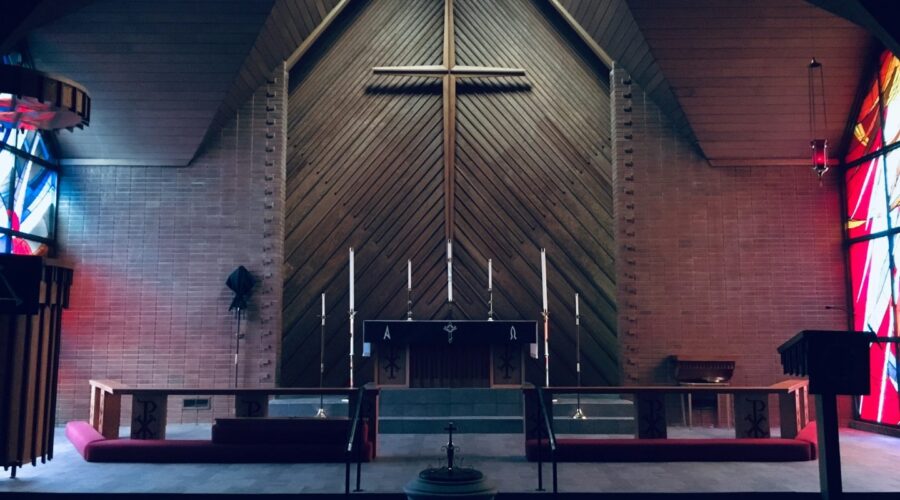
Discover the Largest and Most Impressive Churches in the World
The Holy Trinity Cathedral: A Symbol of Majestic Elegance
Located in Tbilisi, Georgia, the Holy Trinity Cathedral stands tall as the largest church not only in the country but also in the entire Caucasus region. With its breathtaking architecture and colossal dimensions, this cathedral reflects the deep-seated faith and cultural heritage of the Georgian people.
The Holy Trinity Cathedral was consecrated in 2004 and serves as the main cathedral of the Georgian Orthodox Church. It features a unique blend of traditional Georgian Orthodox architecture with modern design elements. Its grandeur is evident in its soaring height, intricate facade, and awe-inspiring interior.
Key Features:
- Height: 101 meters (331 feet)
- Capacity: Over 15,000 worshippers
- Bell tower: 57 meters (187 feet) tall with 12 bells
- Golden dome: 25 meters (82 feet) in diameter
The interior of the cathedral is adorned with exquisite frescoes, mosaics, and iconography. Its vast nave is supported by massive pillars, creating a sense of spaciousness and tranquility. The cathedral also boasts a large underground baptismal area and a museum dedicated to Georgian religious art and history.
Basilica of the National Sanctuary of Our Lady of Aparecida: A Symbol of Faith and Pilgrimage
Nestled in the heart of Aparecida, Brazil, the Basilica of the National Sanctuary of Our Lady of Aparecida is the largest church in the Western Hemisphere and one of the largest in the world. It is a pilgrimage site for devout Catholics from across Brazil and beyond.
The Basilica was built in the 18th century to house a statue of Our Lady of Aparecida, which is revered as the patroness of Brazil. The original statue was discovered in the nearby Paraíba River and is now enshrined in the basilica.
Key Features:
- Length: 188 meters (617 feet)
- Width: 128 meters (420 feet)
- Height: 108 meters (354 feet)
- Capacity: Over 45,000 worshippers
The exterior of the basilica is characterized by its grandiose Neo-Romanesque architecture. Its massive facade features intricate carvings and statues, while the central dome is topped with a large cross. The interior is equally impressive, with soaring vaults, elegant stained glass windows, and a magnificent altar.
Saint Peter’s Basilica: A Timeless Masterpiece of Art and Architecture
Located in the heart of Vatican City in Rome, Saint Peter’s Basilica is the largest and one of the holiest churches in the Catholic world. It is a masterpiece of Renaissance and Baroque architecture and a pilgrimage site for millions of visitors each year.
Construction of Saint Peter’s Basilica began in the 16th century and was completed over a century later. It was built on the site of the former Saint Peter’s Basilica, which was believed to be the burial place of Saint Peter, one of the apostles of Jesus Christ.
Key Features:
- Length: 212 meters (695 feet)
- Width: 149 meters (489 feet)
- Height: 136 meters (446 feet)
- Capacity: Over 60,000 worshippers
The basilica is renowned for its iconic dome, designed by Michelangelo, which dominates the skyline of Rome. Its interior is equally awe-inspiring, with grand columns, elaborate sculptures, and priceless works of art by renowned artists such as Michelangelo, Raphael, and Bernini.
Tips for Visiting the Largest Churches in the World
* Plan your visit in advance and check the opening hours and dress code of the church.
* Allow ample time for your visit to fully appreciate the grandeur and beauty of these remarkable structures.
* Consider hiring a guide for a more insightful and informative experience.
* Be respectful of the religious significance of these churches and maintain a dignified demeanor.
* Take your time to explore the interior and exterior of the churches, paying attention to the architecture, artwork, and historical significance.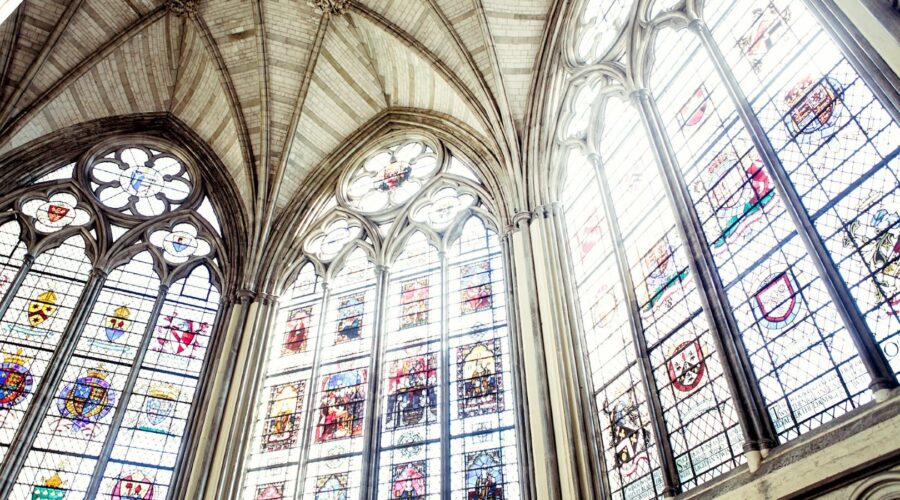
Unveiling the History, Significance, and Architectural Beauty of the Guadalupe Church
Introduction: A Pilgrimage to a Sacred Sanctuary
Nestled in the heart of Mexico City, the Guadalupe Church stands as a beacon of faith and a symbol of Mexican national identity. This iconic basilica holds a profound significance in the country’s religious and cultural landscape, attracting millions of pilgrims and visitors from around the world each year. In this comprehensive guide, we embark on a journey to explore the captivating history, spiritual importance, and architectural brilliance of the Guadalupe Church.
History: A Tapestry of Faith and Legend
The origins of the Guadalupe Church are steeped in a rich tapestry of faith and legend. The story goes that on December 9, 1531, an indigenous man named Juan Diego witnessed the apparition of the Virgin Mary on a hill known as Tepeyac. During this encounter, the Virgin instructed him to build a church on the site.
In 1533, a small chapel was erected on Tepeyac, and it quickly became a popular pilgrimage site. As the number of pilgrims grew, the need for a larger and more substantial church became evident. In 1695, construction began on a new basilica, which was completed in 1709.
Spiritual Significance: A Sanctuary for the Faithful
The Guadalupe Church has played a pivotal role in the spiritual life of Mexico for centuries. It is considered one of the most important Catholic pilgrimage sites in the world, and the Virgin of Guadalupe is revered as the patron saint of Mexico.
Pilgrims come from far and wide to visit the basilica, seeking solace, offering prayers, and witnessing the miraculous image of the Virgin. The church serves as a sanctuary for the faithful, offering a place of worship, hope, and renewal.
Architectural Marvel: A Symphony of Baroque and Neoclassical Styles
Beyond its spiritual significance, the Guadalupe Church is also an architectural masterpiece. The basilica’s design seamlessly blends elements of Baroque and Neoclassical styles, creating a visually stunning and awe-inspiring structure.
The exterior of the church is characterized by an imposing façade with twin bell towers and a central dome. The interior is equally impressive, with its soaring ceilings, intricate ornamentation, and lifelike statues. Each chapel within the basilica features unique architectural details and religious artwork, contributing to the overall grandeur of the space.
The Iconic Image: The Virgin of Guadalupe
The heart of the Guadalupe Church lies in the iconic image of the Virgin Mary, known as the Virgin of Guadalupe. This miraculous image, believed to have been imprinted on Juan Diego’s cloak, is displayed on the main altar of the basilica.
The image has become a symbol of Mexican nationality and a source of deep devotion. Pilgrims flock to the church to venerate the Virgin, praying for miracles, seeking guidance, and expressing their profound gratitude.
Tips for Visitors: Planning Your Pilgrimage
* **Plan ahead:** Make arrangements for accommodation and transportation in advance, especially during peak pilgrimage seasons.
* **Respect the sacredness:** The Guadalupe Church is a holy site. Dress appropriately, maintain silence in designated areas, and show respect for the pilgrims and the religious significance of the place.
* **Take your time:** There is much to see and experience at the Guadalupe Church. Allow ample time to explore the basilica, visit the chapels, and connect with the spiritual atmosphere.
* **Capture the beauty:** The Guadalupe Church is a photographer’s paradise. Bring a camera to capture the stunning architecture, artwork, and the devotion of the pilgrims.
* **Souvenirs and mementos:** There are several shops within the basilica where you can purchase souvenirs, rosaries, and other religious items.Conclusion: A Living Testament to Faith and Heritage
The Guadalupe Church is a testament to the enduring power of faith, the beauty of architecture, and the deep cultural significance of religion in Mexico. It is a pilgrimage destination, a sanctuary for the faithful, and a national treasure.
Whether you are a devout Catholic, a history enthusiast, or simply an admirer of architectural wonders, a visit to the Guadalupe Church is a transformative experience. It offers a glimpse into the heart of Mexican spirituality, showcasing the nation’s deep-rooted faith and its rich cultural heritage.
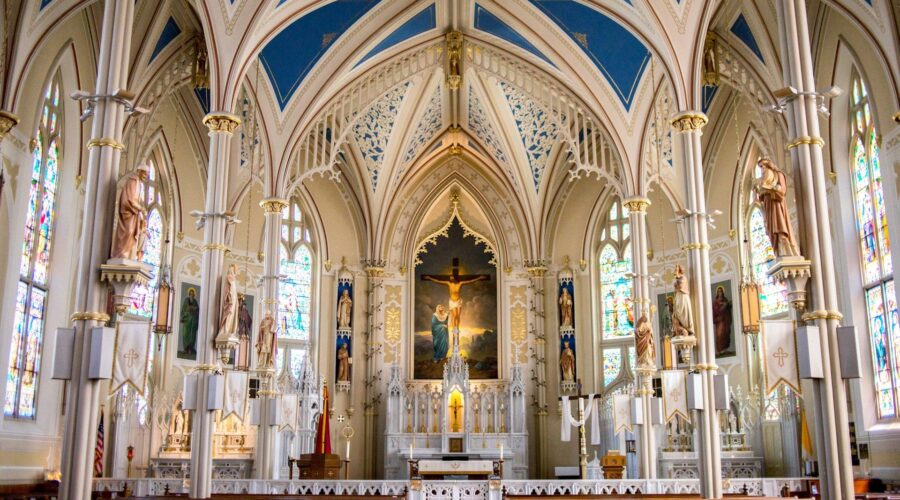
St. Paul’s Episcopal Church: A Historical and Spiritual Landmark
Nestled amidst the bustling streets of San Diego, St. Paul’s Episcopal Church stands as a testament to the enduring power of faith and the architectural grandeur of a bygone era.
Historical Significance
Founded in 1869, St. Paul’s Episcopal Church is the oldest Episcopal church in San Diego and one of the first religious institutions in the city. Its establishment played a pivotal role in the development of the community and the spiritual lives of its residents.
The church building itself, completed in 1887, is a stunning example of Victorian Gothic Revival architecture. Its intricate woodwork, stained-glass windows, and soaring spire have captivated generations of worshippers and visitors alike.
Architectural Beauty
St. Paul’s Episcopal Church is renowned for its architectural splendor. The building features:
- An impressive 160-foot spire topped with a gilded cross
- Elaborate stained-glass windows depicting biblical scenes
- Intricate stone carvings and decorative motifs
- High vaulted ceilings adorned with frescoes
- A majestic pipe organ with over 2,500 pipes
Services and Programs
As an active and vibrant congregation, St. Paul’s Episcopal Church offers a wide range of services and programs:
- Sunday Worship Services: Traditional and contemporary services on Sundays
- Music Ministry: Choirs, bell choirs, and instrumental ensembles
- Children’s and Youth Programs: Sunday school, youth groups, and choirs
- Adult Education: Classes on theology, spirituality, and current events
- Community Outreach: Service projects, food drives, and support for local organizations
Spiritual Guidance
Beyond its historical and architectural significance, St. Paul’s Episcopal Church is a place of spiritual growth and guidance. The clergy and staff provide pastoral care, counseling, and guidance to individuals and families.
The church’s mission is to:
- Proclaim the Gospel of Jesus Christ
- Foster a welcoming and inclusive community
- Nurture spiritual growth through worship, education, and service
Significance in the Community
St. Paul’s Episcopal Church has played a vital role in the San Diego community throughout its history. The church has been a center for civic engagement, social justice advocacy, and interfaith dialogue.
The church has also been instrumental in establishing other Episcopal churches and institutions in the region, including:
- St. Andrew’s Episcopal Church
- Trinity Episcopal Church
- Bishop’s School
Community Impact
St. Paul’s Episcopal Church continues to make a significant impact on the community through its various programs and initiatives:
- Weekly Food Pantry: Providing groceries to families in need
- Neighborhood Homeless Coalition: Partnering with local organizations to assist the homeless
- Community Prayer Chain: Intercessory prayer for individuals and the world
- Environmental Stewardship: Promoting sustainable practices and protecting the environment
A Place of Faith and Inspiration
For over 150 years, St. Paul’s Episcopal Church has been a spiritual beacon in the heart of San Diego. Its magnificent architecture, rich history, and commitment to community service have made it a beloved landmark and a vital part of the city’s religious and cultural heritage.
Whether seeking spiritual guidance, architectural beauty, or a sense of community, St. Paul’s Episcopal Church welcomes all who seek a connection with God and a place to belong.
Contact Information:
St. Paul’s Episcopal Church Address: 2728 Sixth Avenue, San Diego, CA 92103 Phone: (619) 291-7514 Website: https://www.stpaulssandiego.org/ 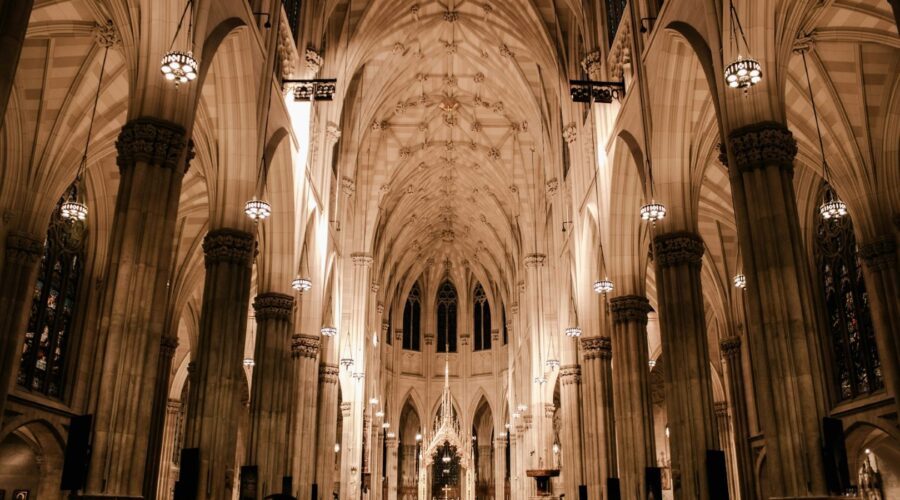
Discover the Rich History and Impact of Oak Grove Baptist Church
A Legacy of Faith and Service
Oak Grove Baptist Church, nestled in the heart of a vibrant community, is a beacon of faith and service. Its roots trace back to the late 19th century, when a group of dedicated believers gathered to worship and support one another.
Early Beginnings
In 1895, a small congregation of African-American families established the Oak Grove Baptist Church. They met in a humble building, which they built with their own hands. Despite the challenges of racial segregation and limited resources, the church flourished under the leadership of its first pastor, Reverend John H. Brown.
Growth and Development
Over the years, Oak Grove Baptist Church experienced steady growth and development. In the early 20th century, the church constructed a larger building to accommodate its expanding membership. It also established a thriving Sunday school, youth programs, and community outreach initiatives.
Impact on the Community
Oak Grove Baptist Church has played a vital role in shaping the social, cultural, and economic fabric of its community.
Education
The church recognized the importance of education and established a school within its facilities. This school provided quality education to children in the community, many of whom had limited access to education elsewhere.
Civil Rights
Oak Grove Baptist Church was at the forefront of the Civil Rights Movement. Its members participated in sit-ins, protests, and other nonviolent actions to fight for equality and justice.
Social Services
The church has always been dedicated to serving the needs of its community. It provides a wide range of social services, including food pantries, clothing drives, and counseling programs.
Leaders and Legacy
Throughout its history, Oak Grove Baptist Church has been led by a succession of dedicated pastors, each contributing to its growth and impact.
Notable Pastors
- Reverend John H. Brown (1895-1925): Founder of the church
- Reverend Martin L. King Sr. (1926-1930): Civil rights leader and father of Martin Luther King Jr.
- Reverend Dr. E. Edward Davis (1931-1968): Champion of social justice
- Reverend Dr. J. L. Franklin (1969-1979): Charismatic preacher and social activist
Continuing Legacy
Today, Oak Grove Baptist Church remains a vibrant and active congregation. It continues to serve the community through its various ministries and programs. The legacy of faith, service, and social justice that it has built over the years continues to inspire and guide its members.
Conclusion
Oak Grove Baptist Church is a testament to the power of faith and the transformative impact of a dedicated community. Its history is a chronicle of perseverance, growth, and service. As it continues to navigate the challenges and opportunities of the future, Oak Grove Baptist Church will undoubtedly remain a beacon of hope and inspiration for generations to come.
Call to Action
To learn more about Oak Grove Baptist Church, you can visit its website or visit the church at 123 Main Street, Anytown, USA.
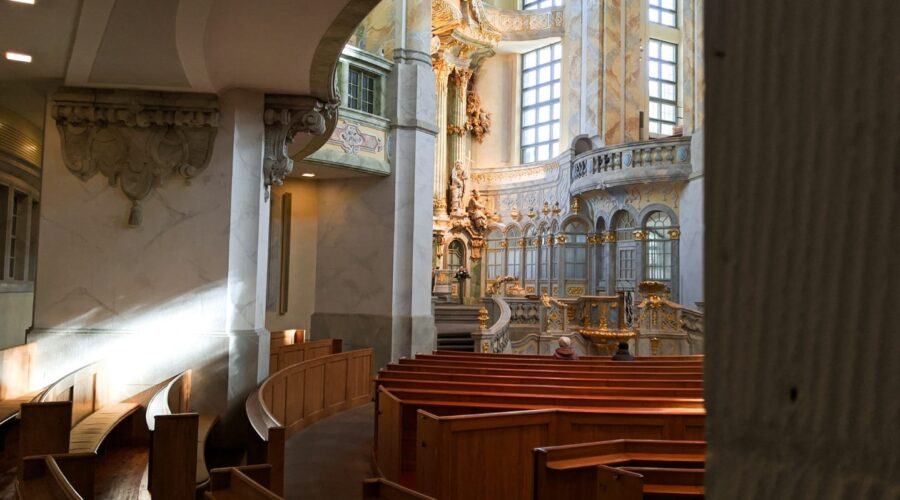
The Church of Jesus Christ of Latter-day Saints: A Comprehensive Guide
Introduction
The Church of Jesus Christ of Latter-day Saints, also known as the LDS Church or Mormon Church, is a Christian denomination founded in the United States in the early 19th century. With over 16 million members worldwide, it is one of the world’s largest and most recognizable religious organizations.
This comprehensive guide provides an in-depth look at the history, beliefs, practices, and controversies surrounding the LDS Church. Whether you are a curious outsider, a potential convert, or a lifelong member, this guide will shed light on the multifaceted and fascinating world of Mormonism.
History
Early Years (1820-1844)
The LDS Church was founded by Joseph Smith Jr. in 1830 in Fayette, New York. Smith claimed to have received revelations from God that led him to translate the Book of Mormon, a sacred text that Mormons believe to be a companion to the Bible.
The church quickly grew, but faced significant persecution and opposition. Smith and his followers were forced to move several times, eventually settling in Nauvoo, Illinois, where they established a thriving community.
Persecution and Martyrdom (1844-1846)
In 1844, Smith was killed by a mob in Carthage, Illinois. His death sparked a succession crisis and led to the eventual departure of the majority of Mormons from Nauvoo.
Exodus to the West (1846-1869)
Under the leadership of Brigham Young, the Mormons undertook a massive exodus westward, crossing the Great Plains and settling in the Salt Lake Valley in Utah. They established a new colony known as Deseret, which eventually became the state of Utah.
The Mormons faced significant challenges in the West, including conflicts with Native American tribes and the U.S. government. However, they also achieved significant economic and political success.
Beliefs
Core Beliefs
- The Godhead: Mormons believe in a godhead consisting of God the Father, Jesus Christ, and the Holy Ghost.
- Divine Nature of Jesus Christ: Mormons believe that Jesus Christ is the Son of God and the Savior of mankind.
- Resurrection and Eternal Life: Mormons believe that all people will be resurrected after death and that those who have lived righteously will inherit eternal life.
- The Book of Mormon: Mormons revere the Book of Mormon as a sacred text that contains additional revelations from God.
- Continuing Revelation: Mormons believe that God continues to reveal his will through modern prophets and apostles.
Distinctive Doctrines
- Eternal Marriage: Mormons believe that marriage is ordained of God and that it can continue beyond death.
- Baptism for the Dead: Mormons believe that those who have died without the opportunity to be baptized can be baptized by proxy.
- Temple Worship: Mormons build and maintain temples where they perform sacred ordinances, such as marriage and baptism for the dead.
Practices
Worship Services
LDS Church members attend weekly worship services known as sacrament meetings. These meetings include prayers, hymns, and talks by church leaders.
Members also attend the temple regularly to perform sacred ordinances. Temple ordinances are performed in a sacred setting and are considered to be essential for salvation.
Missionary Work
Missionary work is a central part of LDS Church culture. Young men and women volunteer to serve two-year missions in various parts of the world, teaching their beliefs and inviting others to be baptized.
Education
The LDS Church places a high value on education. It operates over 800 schools and universities worldwide, including Brigham Young University and the University of Utah.
Controversies
The LDS Church has faced numerous controversies throughout its history, including:
Polygamy
Early LDS Church leaders practiced polygamy, or the marriage of one man to multiple women. This practice was abandoned in 1890 under pressure from the U.S. government.
Race and Priesthood
Until 1978, the LDS Church restricted the priesthood, its highest office, to men of European descent. This policy was rescinded in 1978, but it remains a controversial topic for some members.
LGBTQ+ Rights
The LDS Church’s stance on LGBTQ+ issues has been evolving in recent years. While the church affirms that homosexual behavior is a sin, it has softened its stance on same-sex marriage and other LGBTQ+ issues.
Conclusion
The Church of Jesus Christ of Latter-day Saints is a complex and multifaceted religious organization with a rich history, unique beliefs, and a global reach. Its members are known for their strong sense of community, commitment to education, and missionary work.
While the church has faced controversies and challenges over the years, it continues to thrive and grow, attracting millions of members worldwide. Understanding the LDS Church is essential to gaining a broader perspective on the diverse landscape of Christian denominations.
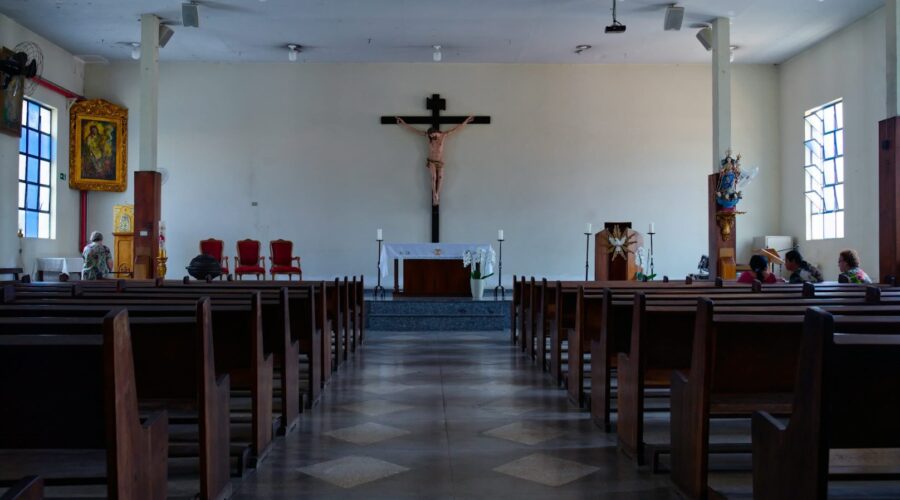
Discover the History, Significance, and Impact of the Holy Name of Jesus Church
Introduction
The Holy Name of Jesus Church, a revered Catholic parish in Chicago, Illinois, holds a rich history, profound religious significance, and continues to play a vital role in the city’s spiritual and cultural landscape.
History of the Parish
Humble Beginnings
The origins of the Holy Name of Jesus Church trace back to the late 19th century. In 1869, a small group of German immigrants founded a parish in the Avondale neighborhood of Chicago, named after the patron saint of the German people, St. Boniface.
Expansion and Growth
As the congregation grew, the need for a larger church became evident. In 1909, the parish purchased land on Damen Avenue and dedicated the Holy Name of Jesus Church in 1910. The church, designed in the Gothic Revival style, featured intricate stained glass windows and a magnificent vaulted ceiling.
Architectural Splendor
Gothic Revival Masterpiece
The Holy Name of Jesus Church is a prime example of Gothic Revival architecture. Its towering spires and pointed arches evoke the grandeur of medieval cathedrals. The church’s exterior is adorned with intricate carvings and gargoyles, symbolizing the struggle between good and evil.
Interior Sanctuary
Inside the church, visitors are greeted by a breathtaking sanctuary. The massive nave is supported by rows of slender columns, creating an atmosphere of awe and inspiration. The vaulted ceiling is painted with vibrant murals depicting biblical scenes.
Religious Significance
Devotion to the Holy Name
As its name suggests, the Holy Name of Jesus Church holds a profound reverence for the name of Jesus Christ. The parish’s mission is to promote devotion to Jesus’ name and to bear witness to his love and grace.
Patron Saint
The patron saint of the church is St. Eugene de Mazenod, the founder of the Missionary Oblates of Mary Immaculate. St. Eugene’s unwavering faith in the power of Jesus’ name inspired the parish’s dedication and its commitment to evangelization.
Community Outreach
Social Service Programs
The Holy Name of Jesus Church is deeply committed to serving the wider community. The parish runs a variety of social service programs, including a food pantry, a clothing bank, and a homeless outreach program.
Educational Institutions
The church also operates several educational institutions, including Holy Name of Jesus School and Resurrection High School. These schools provide quality education and spiritual guidance to students from diverse backgrounds.
Cultural Impact
Local Landmark
The Holy Name of Jesus Church is not only a religious center but also a beloved Chicago landmark. Its towering presence and architectural beauty have made it a recognizable icon in the city’s skyline.
Musical Heritage
The church is renowned for its vibrant music program. The Holy Name Cathedral Choir and Orchestra perform a wide repertoire of sacred and classical music, enriching the spiritual experience for congregants and visitors alike.
Visiting the Church
Mass Times and Schedule
The Holy Name of Jesus Church offers daily and weekend Masses, as well as special liturgical services throughout the year. Visit the parish website for the most up-to-date schedule.
Tours and Pilgrimages
Guided tours of the church are available by appointment. Pilgrims and visitors are welcome to explore the church’s historic architecture, admire its artistic treasures, and learn about its spiritual significance.
Conclusion
The Holy Name of Jesus Church is a vibrant and enduring testament to faith, community, and cultural heritage. Its historical roots, architectural splendor, religious significance, and community outreach make it a beloved institution in Chicago. Whether seeking spiritual inspiration, architectural appreciation, or a glimpse into the city’s history, visitors to the Holy Name of Jesus Church will find a place of beauty, grace, and enduring legacy.
Additional Resources
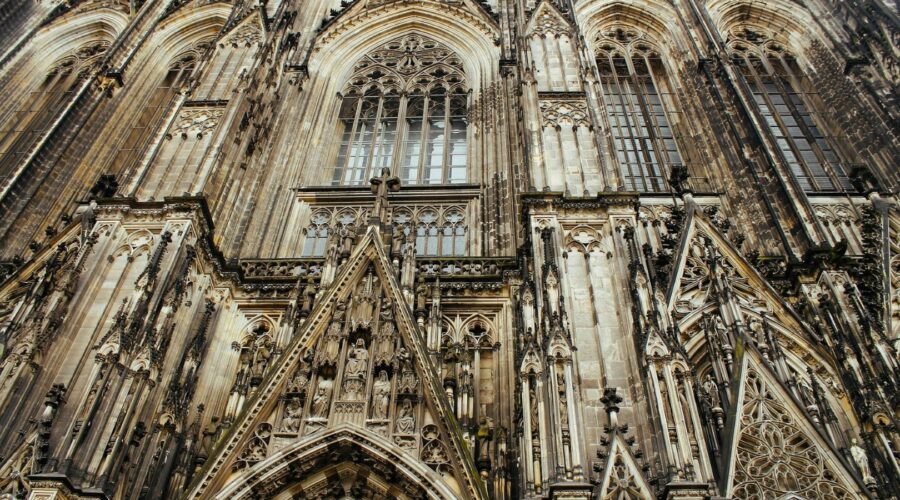
Gloria Dei Lutheran Church: A Historical and Spiritual Landmark in Philadelphia
An Introduction to Gloria Dei Lutheran Church
Gloria Dei Lutheran Church is a historic Lutheran church located in the Old City neighborhood of Philadelphia, Pennsylvania. It is the oldest surviving Lutheran church in the United States, having been founded in 1695 by a group of German immigrants led by Pastor Johann Heinrich Goettsch. Over the centuries, Gloria Dei has played a significant role in the religious, social, and cultural life of Philadelphia and beyond.
The Architecture and History of Gloria Dei
Architectural Style
Gloria Dei Lutheran Church is a fine example of Georgian-style architecture, characterized by its symmetrical facade, red brick exterior, and white trim. The church building was designed by Nicholas Garrison and completed in 1700. It features a bell tower with a distinctive copper steeple, which was added in 1743.
Historical Significance
Gloria Dei has witnessed many important events throughout its history. It was the site of the first Lutheran ordinations in North America and served as a meeting place for the Continental Congress during the American Revolution. The church’s walls bear witness to the prayers, joys, and sorrows of generations of Philadelphians.
The Religious Life of Gloria Dei
Worship Services
Gloria Dei offers a variety of worship services throughout the week, including Sunday morning services, Wednesday evening services, and special services during the liturgical seasons. The church’s worship style is a blend of traditional and contemporary elements, with a focus on the liturgy, music, and preaching.
Community Outreach
Gloria Dei is actively involved in outreach and service to the surrounding community. The church supports a number of social service programs, including a food pantry, homeless shelter, and youth programs. It also offers a variety of educational and cultural events for people of all ages.
The People of Gloria Dei
Gloria Dei is a diverse and welcoming congregation with members from all walks of life. The church’s motto, “A Place of Welcome for All,” reflects its commitment to creating an inclusive and supportive community where all are valued.
Visiting Gloria Dei Lutheran Church
Gloria Dei Lutheran Church is located at 225 S 4th St, Philadelphia, PA 19106. Visitors are welcome to attend worship services or schedule a tour during regular business hours.
Accessibility
Gloria Dei is wheelchair accessible and offers assistive listening devices for the hearing impaired.
Parking
Limited parking is available on the street and in nearby garages. Visitors may also take public transportation to the Market East Station, which is a few blocks away from the church.
Conclusion
Gloria Dei Lutheran Church is a historic and vibrant congregation that has played a vital role in the life of Philadelphia for over three centuries. Its beautiful architecture, rich history, and active community outreach make it a must-visit destination for visitors and locals alike.
Additional Resources
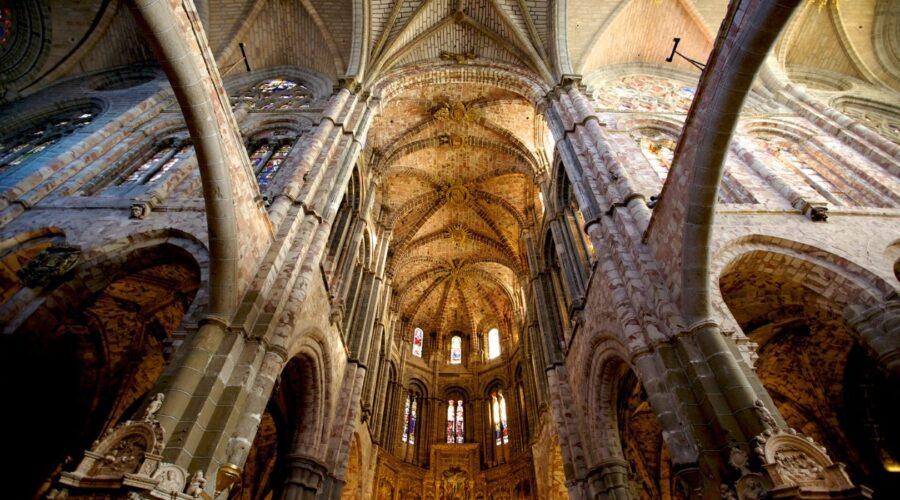
Trinity Church Wall Street: An Architectural Marvel with a Rich History
Nestled in the heart of Manhattan’s Financial District, Trinity Church Wall Street stands as a majestic landmark and an architectural masterpiece. This historic Episcopal church has played a pivotal role in the religious, social, and cultural life of New York City for over three centuries.
A Legacy of Architectural Brilliance
Neo-Gothic Revival Design
Completed in 1846, Trinity Church is a prime example of the Neo-Gothic Revival architectural style. Its soaring spires, intricate stonework, and stained-glass windows evoke the grandeur of medieval cathedrals. The church’s silhouette has become an iconic symbol of New York’s skyline.
Richard Upjohn’s Vision
The architect responsible for Trinity Church’s design was Richard Upjohn, a renowned English-born architect who played a major role in the development of the Gothic Revival style in the United States. Upjohn’s meticulous attention to detail is evident in the church’s opulent interior and exterior.
Historical Significance
Founding and Early Years
Trinity Church’s origins can be traced back to 1697, when a group of Anglican parishioners purchased land for the construction of a chapel. The original wooden structure was replaced by a stone church in 1776. However, this building was destroyed in the Great Fire of New York in 1776.
Reconstruction and Growth
After the Revolutionary War, the congregation of Trinity Church decided to rebuild their church on a grander scale. Construction on the new church began in 1839 and was completed in 1846. Over the years, the church has undergone several renovations and additions, preserving its architectural integrity while adapting to the changing needs of its congregation.
A Spiritual and Cultural Center
Religious Significance
Trinity Church is the flagship church of the Episcopal Diocese of New York and one of the most important churches in the Anglican Communion. The church has been a center of worship, spiritual guidance, and community outreach for generations of New Yorkers.
Cultural Impact
Beyond its religious significance, Trinity Church has also been a major cultural institution. It has hosted countless concerts, lectures, and exhibitions, showcasing the talents of renowned artists and intellectuals.
Practical Information
Visiting Trinity Church
- Address: 75 Broadway, New York, NY 10006
- Hours: Monday-Friday: 7:00 AM – 6:00 PM, Saturday: 7:00 AM – 4:00 PM, Sunday: 7:00 AM – 1:00 PM
- Admission: Free (donations welcome)
- Accessibility: The church is wheelchair accessible
Guided Tours
Trinity Church offers guided tours of its historic interior and exterior. Tours are available on a first-come, first-served basis and last approximately one hour.
Events and Services
Trinity Church hosts a wide range of events and services throughout the year, including worship services, concerts, lectures, and more. For a complete schedule of events, visit the church’s website at https://www.trinitywallstreet.org/.
Conclusion
Trinity Church Wall Street is a true architectural treasure and a testament to the enduring faith and spirit of New Yorkers. Its rich history, stunning architecture, and vibrant community make it a must-visit destination for anyone interested in the history, culture, and beauty of the Big Apple.
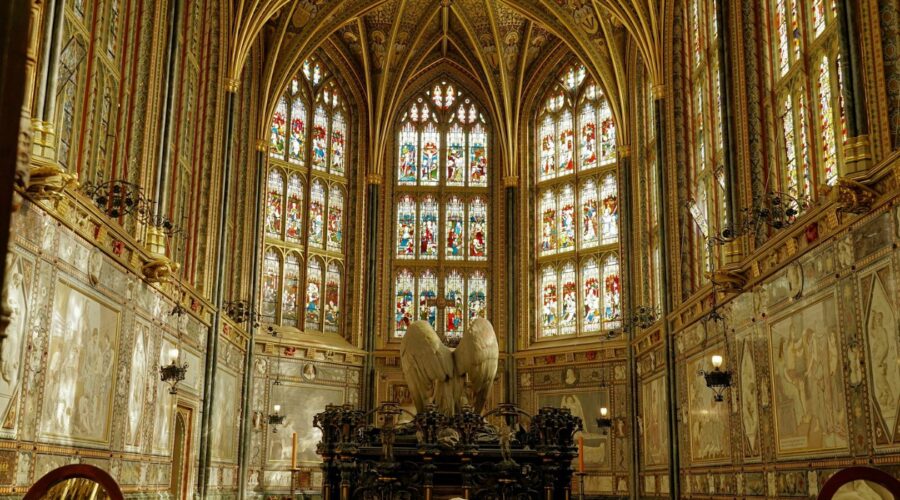
Explore the Essence of Grace Episcopal Church: A Sanctuary for Spiritual Growth
Introduction
Grace Episcopal Church, nestled amidst picturesque surroundings, invites you on a transformative spiritual journey. As one of the oldest parishes in the United States, it holds a rich history, inspiring architecture, and a welcoming community. This comprehensive guide will delve into the unique aspects that make Grace Episcopal Church an exceptional destination for spiritual fulfillment.
A Historical Tapestry: Unraveling the Legacy
Founded in 1692, Grace Episcopal Church has witnessed centuries of religious and societal changes. Its grand sanctuary, built in the early 19th century, is an architectural marvel that echoes the elegance of the Federal and Gothic Revival styles.
Throughout its history, Grace Episcopal Church has played a pivotal role in shaping the community. It has been a beacon of hope during times of hardship, fostering social justice initiatives, and supporting local charities.
Divine Worship: Experience the Sacred
At the heart of Grace Episcopal Church lies its commitment to divine worship. The Holy Eucharist, celebrated weekly, is a central sacrament that connects worshippers with the divine.
Sunday Services:
- 8:00 AM: Holy Eucharist (Rite I)
- 10:00 AM: Choral Eucharist (Rite II)
- 5:00 PM: Evening Prayer (Wednesday)
Grace Episcopal Church also offers a variety of other spiritual practices, including:
- Morning and Evening Prayer services
- Baptisms and weddings
- Adult education classes
- Biblical studies
Community Involvement: A Commitment to Service
Grace Episcopal Church is not only a place of worship but also a vibrant community that extends its reach beyond the church walls. Through its various outreach programs, the church strives to make a positive impact in the local and global communities.
Mission and Outreach Initiatives:
- Backpack Brigade: Providing backpacks filled with essential school supplies to underprivileged children
- Food Pantry: Distributing food to families in need
- Homeless Outreach: Offering support and resources to individuals experiencing homelessness
By embodying the principles of compassion, service, and social justice, Grace Episcopal Church fosters a sense of community and belonging.
Spiritual Growth: Nurturing Your Faith
Grace Episcopal Church believes in the transformative power of spiritual growth. Through a variety of programs and resources, the church supports its members on their individual journeys of faith.
Spiritual Formation Opportunities:
- Adult Formation Classes: Deepening understanding of the Bible, Anglicanism, and Christian spirituality
- Retreats: Providing opportunities for reflection, renewal, and connection with the divine
- Spiritual Direction: Offering personalized guidance and support on the spiritual path
By providing a supportive and nurturing environment, Grace Episcopal Church empowers individuals to grow in their faith and live out their spiritual calling.
Conclusion
Grace Episcopal Church is more than just a building; it is a thriving community where faith, worship, and service intertwine. Its rich history, stunning architecture, and commitment to spiritual growth make it an exceptional destination for those seeking a deeper connection with God and their fellow human beings.
Whether you are a lifelong Episcopalian, a spiritual seeker, or simply seeking a sanctuary for reflection, Grace Episcopal Church welcomes you with open arms. Journey with us on this transformative path, where grace abounds and the spirit flourishes.
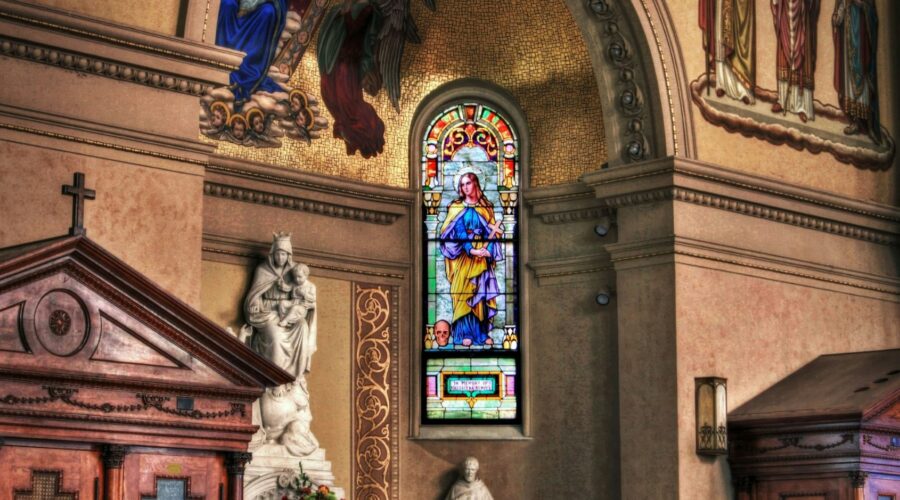
Discover the Historic Significance and Inspiring Community of Trinity Episcopal Church
Nestled amidst the bustling streets of New York City, Trinity Episcopal Church stands as a beacon of faith, history, and unwavering community. For centuries, this magnificent landmark has witnessed the city’s transformation while serving as a spiritual and architectural jewel.
A Historical Tapestry of Faith and Heritage
The Birth of a Parish
The story of Trinity Episcopal Church begins in 1697, when King William III of England granted a charter to establish the parish. A small wooden chapel was erected on Broadway, marking the humble beginnings of a congregation that would grow into a thriving spiritual community.
A Symbol of Resilience
Over the centuries, Trinity Episcopal Church has weathered countless storms, both literal and figurative. It survived the Revolutionary War, the Great Fire of 1776, and the economic turmoil of the 19th century. Each challenge strengthened the church’s resolve and deepened its connection to the city.
Architectural Evolution
The present sanctuary, designed by renowned architect Richard Upjohn, was completed in 1846. This magnificent Gothic Revival masterpiece features soaring vaulted ceilings, exquisite stained-glass windows, and intricate carvings that evoke a sense of awe and inspiration.
A Vibrant Sanctuary for Spiritual Growth
Sunday Worship Services
Trinity Episcopal Church offers a variety of Sunday worship services that cater to different needs and preferences. Traditional, modern, and contemporary services provide opportunities for both spiritual reflection and vibrant community engagement.
Music and the Arts
Music plays an integral role at Trinity Episcopal. The church choir, renowned for its exceptional talent, enhances worship services with soul-stirring anthems and hymns. Additionally, the church hosts concerts, art exhibitions, and other cultural events.
Community Outreach and Service
Beyond its walls, Trinity Episcopal Church is deeply involved in serving the community. Through its outreach programs, the church provides food for the needy, shelter for the homeless, and support for those struggling with addiction and mental illness.
A Welcoming Congregation for All
Trinity Episcopal Church believes that God calls all people into a loving and inclusive community. Regardless of age, race, gender, sexual orientation, or economic status, everyone is welcomed and valued as a beloved child of God.
Ministries and Groups
The church offers a wide range of ministries and groups to meet the needs of its members. These include youth groups, Bible study groups, social action committees, and support groups for various life situations.
Education and Christian Formation
Trinity Episcopal Church places great emphasis on Christian education, offering Sunday school classes for children and adults. Through these programs, members deepen their understanding of the faith, explore spiritual practices, and engage in meaningful dialogue.
Tips for Visitors
Planning Your Visit
To ensure a meaningful and memorable experience, plan your visit in advance. Check the church website for service times and special events.
Dress Code
There is no specific dress code at Trinity Episcopal Church. Dress comfortably and respectfully, as you would for any other formal occasion.
Accessibility
The church is wheelchair accessible and offers assistive listening devices for those with hearing impairments.
Getting There
Trinity Episcopal Church is located at Broadway and Wall Street in the heart of the Financial District. It is easily accessible by subway, bus, or car.
Conclusion
Trinity Episcopal Church is a remarkable institution that has played a pivotal role in the spiritual, architectural, and social landscape of New York City. Its historic significance, vibrant worship services, and unwavering community spirit continue to inspire and uplift generations. Whether you are a lifelong member, a curious visitor, or a seeker of spiritual guidance, Trinity Episcopal Church is a welcoming sanctuary where the transformative power of faith can be experienced.
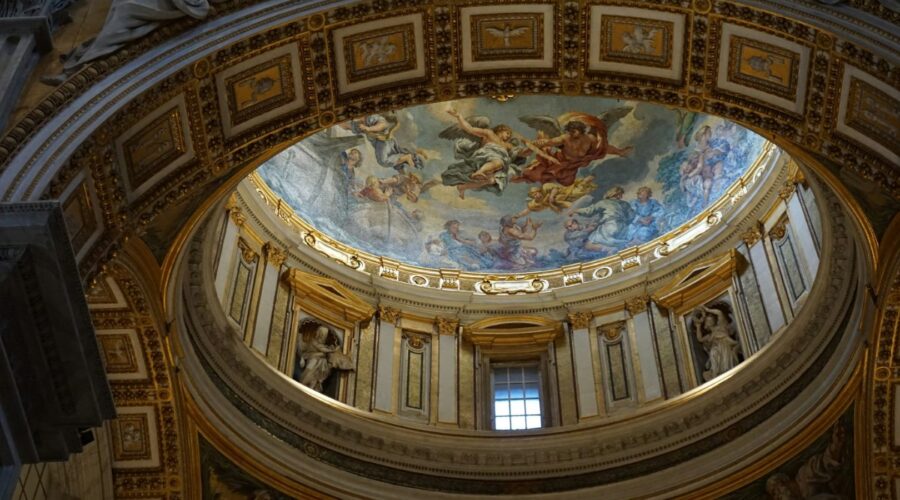
Charles Church: A Comprehensive Guide to the Prestigious London Neighborhood
Introduction
Charles Church is an exclusive neighborhood in Westminster, Central London. Known for its opulent terraced houses, leafy streets, and proximity to St James’s Park, it is a highly desirable area for discerning buyers. This guide provides an in-depth exploration of Charles Church, covering its history, architecture, amenities, and lifestyle, to help you make an informed decision about potential real estate investments.
History
Origins
The origins of Charles Church can be traced back to the 17th century, when the area was part of St Martin-in-the-Fields parish. In the 18th century, Charles Spencer, 3rd Duke of Marlborough, acquired land in the area and developed it into a residential enclave. The neighborhood was named after its prominent landmark, the Church of St Charles the Martyr, which was built in 1669.
Architectural Heritage
Charles Church is characterized by its elegant and cohesive Georgian architecture. The terraced houses, many of which are Grade II listed, feature red brick facades, sash windows, and wrought-iron balconies. The neighborhood’s wide streets and ample green spaces create a harmonious and verdant environment.
Amenities
Parks and Recreation
Charles Church benefits from its close proximity to St James’s Park, one of London’s largest and most beautiful parks. The park offers a serene setting for walks, picnics, and outdoor activities. Other nearby green spaces include Green Park and Hyde Park.
Shopping and Dining
Charles Church is conveniently located near several upscale shopping and dining destinations. Mayfair, with its luxury boutiques and Michelin-starred restaurants, is just a short walk away. Oxford Street, one of London’s busiest shopping streets, is also easily accessible.
Arts and Culture
The neighborhood is home to a number of cultural institutions, including the Royal Academy of Arts, the National Portrait Gallery, and the Wallace Collection. Buckingham Palace and the Houses of Parliament are also within easy reach.
Transport
Charles Church is well-connected by public transport. St James’s Park underground station (District and Circle lines) is within walking distance, providing quick access to the rest of London. Several bus routes also serve the area.
Lifestyle
Residents of Charles Church enjoy a privileged lifestyle surrounded by elegance, exclusivity, and convenience. The neighborhood offers a peaceful retreat from the hustle and bustle of the city while providing access to world-class amenities and attractions.
Real Estate Market
Market Overview
The real estate market in Charles Church is highly competitive, with limited supply and strong demand. Properties in the area tend to be priced at a premium due to their prime location, architectural significance, and historical charm.
Property Types
The majority of properties in Charles Church are terraced houses, ranging in size from two to six bedrooms. Townhouses and apartments are also available but are rarer and command higher prices.
Price Range
Prices for properties in Charles Church vary depending on size, condition, and location. As of 2023, the average price for a terraced house in the area is approximately £6 million.
Conclusion
Charles Church is an exceptional neighborhood that offers an unparalleled combination of elegance, history, and modern amenities. With its stunning Georgian architecture, tranquil green spaces, and proximity to world-class attractions, it is a highly desirable destination for discerning buyers seeking the quintessential London lifestyle.
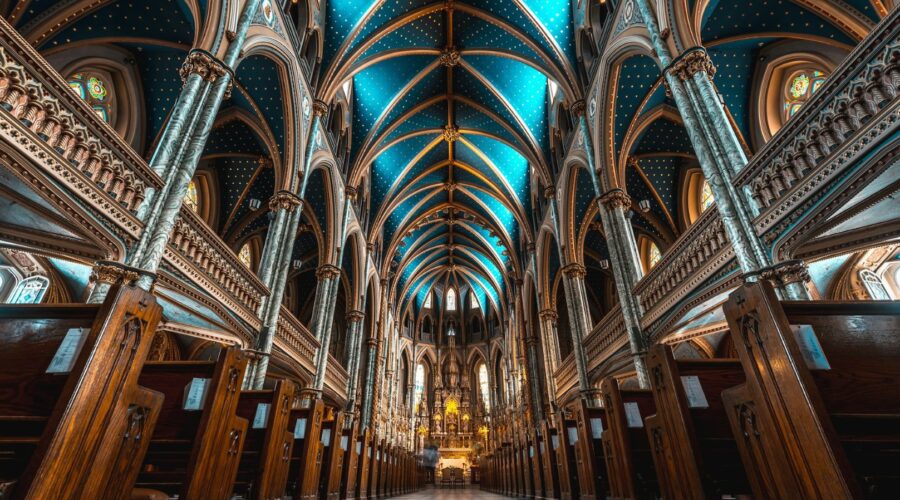
Discover the Rich History and Enchanting Architecture of St. James’s Church
Immerse yourself in the captivating history and architectural splendor of St. James’s Church, a beacon of ecclesiastical heritage and cultural significance. This comprehensive guide unravels the intriguing stories, hidden details, and awe-inspiring features that have made St. James’s Church an enduring landmark in the heart of London.
The Intriguing History of St. James’s Church
St. James’s Church traces its origins to the 12th century, with the first stone chapel likely built around 1140. However, the church’s most significant transformation occurred in the 17th century under the patronage of King Charles II.
The Wren’s Majestic Design
In 1661, Sir Christopher Wren, renowned for his architectural genius, was commissioned to redesign the church. Wren’s classical style resulted in an exquisite edifice, featuring a grand, columned portico, a soaring tower, and a spacious interior adorned with intricate carvings and stained-glass windows.
Royal Connections and Grand Weddings
St. James’s Church has witnessed a plethora of royal weddings, including Princess Anne’s marriage to Captain Mark Phillips in 1973. The church’s association with royalty continues to this day, with Queen Elizabeth II attending regular services.
Architectural Highlights of St. James’s Church
St. James’s Church boasts a harmonious blend of classical and Gothic architectural elements that create a visually captivating masterpiece.
The Towering Steeple
The church’s most striking feature is its towering spire, which reaches a height of 180 feet. Constructed from Portland stone, the steeple is adorned with intricate carvings and serves as a prominent landmark in the city skyline.
The Columned Portico
The grand portico at the church’s entrance is supported by six colossal Corinthian columns. These columns are adorned with intricate carvings and support a triangular pediment featuring a relief depicting Saint James the Great.
The Impressive Interior
The interior of St. James’s Church is a testament to Wren’s architectural brilliance. The nave is divided by rows of tall, fluted columns, creating a sense of grandeur and spaciousness.
Exploring the Notable Features of St. James’s Church
Beyond its architectural splendor, St. James’s Church is home to numerous notable features that enhance its historical and cultural significance.
The Historic Organ
The church’s renowned organ, built by renowned organ builder Bernard Smith in 1691, is one of the oldest surviving organs in London. The organ has undergone several restorations over the centuries and continues to be played for services and concerts.
The Poets’ Corner
St. James’s Church is renowned for its Poets’ Corner, a memorial to some of England’s most celebrated poets. Among those commemorated are John Dryden, William Blake, and Alfred, Lord Tennyson.
The Stained-Glass Windows
The church’s magnificent stained-glass windows depict a variety of biblical scenes and saints. The windows, created by renowned artists, such as Edward Burne-Jones and William Morris, add a vibrant and colorful element to the church’s interior.
Tips for Visiting St. James’s Church
To fully appreciate the beauty and significance of St. James’s Church, consider these practical tips:
- Check the church’s website for service times and special events.
- Book a guided tour in advance to delve deeper into the church’s history and architecture.
- Allow ample time to explore the church’s interior, including the Poets’ Corner and the stained-glass windows.
- Consider attending a musical performance in the church, such as an organ recital or a choral concert.
Additional Resources
- Official website of St. James’s Church
- St. James’s Church on Visit London
- St. James’s Church on Historic England
Conclusion
St. James’s Church stands as a testament to the enduring power of faith and the artistry of human ingenuity. Its rich history, magnificent architecture, and notable features have made it a beloved landmark in London, admired by countless visitors and locals alike. By exploring this ecclesiastical masterpiece, we not only appreciate its architectural beauty but also connect with the stories and traditions that have shaped it over centuries.